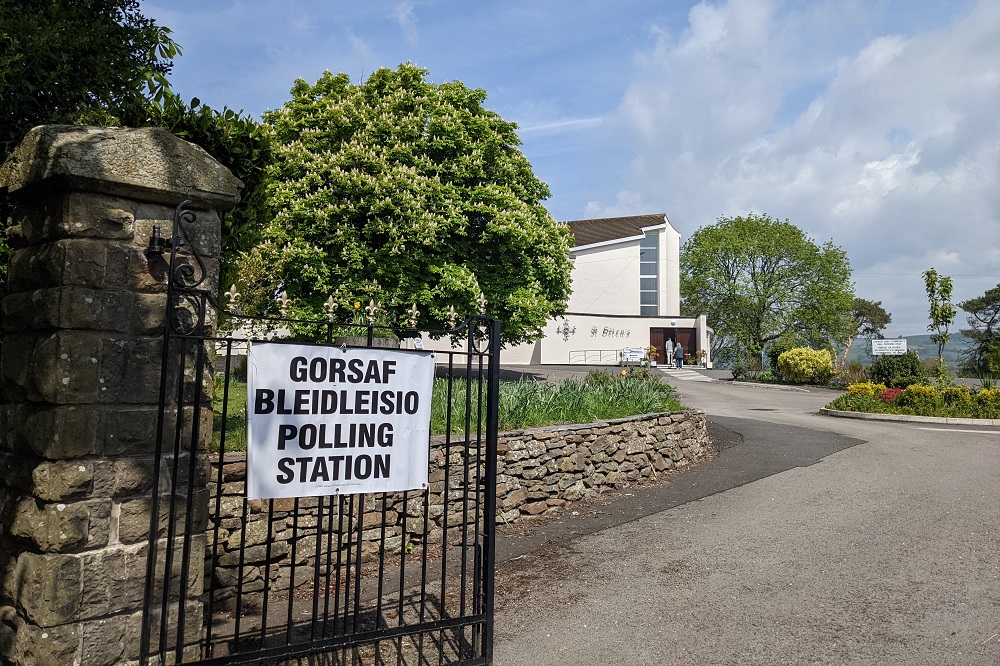Strong performance sees Labour home in Caerphilly despite shock defeat for leader

Rhiannon James, local democracy reporter
Labour secured 45 out of the 69 seats on Caerphilly County Borough Council to retain its majority despite seeing its leader defeated in her seat by the Independents when the votes were counted on Friday.
Plaid Cymru candidate Lindsay Whittle received the highest amount of votes of any candidate with 1,975 and was re-elected to represent Penyrheol alongside three other Plaid Cymru candidates as the party maintained their 18 seats.
A total of six independent candidates were also elected.
Cllr Colin Mann, leader of the Plaid Cymru group on the council, said: “It was a solid performance by the party but is disappointing that we did not make progress at this election.
“I’m very pleased in many wards people have once again shown faith in their Plaid Cymru candidates and we gained two seats in St Cattwg ward. It is the first time we have held a county level in the St Cattwg ward and represents good progress in the north of the borough.
“Although we did not win a seat in Aberbargoed and Bargoed there was an excellent performance from our candidates and it is something we can build on.”
Colin Mann also expressed his commiserations at Mike Davies, a Plaid Cymru candidate in Crumlin, losing his seat and thanked him for all his work.
The majority of the Independent candidates all received more than 1,000 votes each – except for Bob Owen, who received 983, and was re-elected for Risca West.

Two of the Independent candidates succeeded in the Ynysddu ward, where leader of the council Philippa Marsden lost her seat.
Successful candidate Janine Reed said: “People in the valley feel that they were betrayed and were not being listened to, this shows in the turnout and the votes.
“This has been six long years of hard work.”
Ynysddu received the highest turnout in the county borough with a 45.78% turnout – up 11% from 2017.
Blackwood remained an Independent-led ward, with Andrew Farina-Childs, Kevin Etheridge, and Nigel Dix retaining their seats.
Nigel Dix said their success came from “working hard and putting the people first”. He added: “As independents we can’t hide behind the party, they vote for us as individuals, and it’s a personal vote of support.”
Strong performance
Despite the Leader losing her seat, it was a strong performance from Labour who retained its majority.
Deputy Leader of the council, Jamie Pritchard, was re-elected to represent the Morgan Jones ward alongside Labour candidates Shayne Cook and Anne Broughton-Pettit.
Philippa Leonard, a successful Labour candidate in Risca East, said she was “over the moon” to be elected.
She added: “I’m relieved and absolutely ecstatic to carry on the work in the community.”
Cllr Leonard has been re-elected alongside fellow Labour candidates Arianna Leonard and Nigel George, who is the council’s Cabinet Member for Waste, Public Protection and Street Scene.
Labour’s Shane Williams, who was elected to represent Cefn Fforest and Pengam alongside fello Labour candidates Teresa Heron and Marina Chacon-Dawson, said: “It’s not about me personally, it’s about making sure that we act in the interest of the people we have been elected to serve – we have to take notice of their concerns.”
Caerphilly County Borough Council’s Annual General Meeting is being held on Thursday, May 19 – all the new and familiar councillors who were successful are expected to attend.
The decision on who will be the next leader of the council is yet to be announced.
Support our Nation today
For the price of a cup of coffee a month you can help us create an independent, not-for-profit, national news service for the people of Wales, by the people of Wales.




